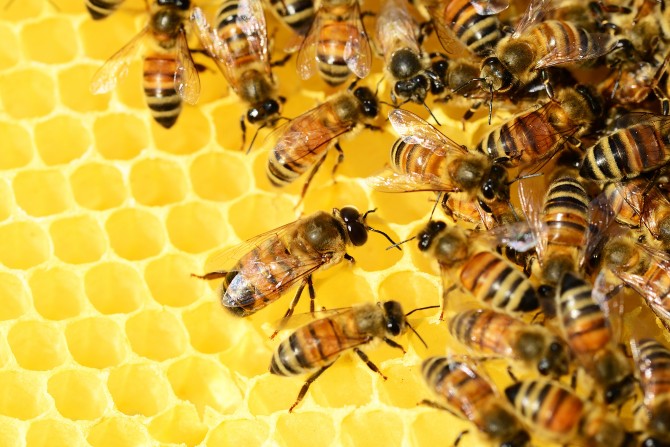Safe spraying to keep bees healthy
September 16, 2020 
Apiculture NZ and Federated Farmers are working together this month to promote awareness of safe spray practices to help protect our bees. Bees are essential for the pollination of thousands of plant species – native and agricultural alike. As plant flowering and bee activity increases through the spring and summer months, the risk to bees from spray application also rises.
Pesticides and herbicides can have a big impact on bees and their honey, this can severely impact pollination and put our valuable honey export crop at risk. Recently, for example, small amounts of glyphosate residues were found some New Zealand honeys and while close to 80% of those tested had no residue detections and there are no food safety issues linked with those that did, we are concerned to see this occur.
There are a number of steps that help farmers and growers protect honey bees when spraying any pesticide but key as always is also ensuring open communications between farmers and beekeepers when spraying occurs.
Those steps are:
Consider whether spraying is necessary:
• What evidence is there to support the spraying of this crop at this time?
• Consider pest pressure, weed size and disease symptoms. Survey your crop to determine if pests have reached thresholds where control with pesticides is necessary.
• Implement an integrated pest management plan to apply pesticides only when necessary.
Read the label carefully:
• Read the instructions carefully to ensure you only use the recommended and follow all warnings on the label.
• Only use bee-safe products if risks to honey bees are likely.
• Take care in securing chemical tanks and dispose of used containers carefully. Bees have been known to gather water from such sources.
• Similarly, avoid potential contamination of troughs or any other natural water source (particularly water sources that are still)
Don’t spray chemicals near budding or flowering plants where bees are likely to forage:
• Bees forage flowers to gather nectar and pollen, their major food sources. During this foraging action, bees successfully pollinate the crop, increasing its value to the farmer.
• Mow flowering weeds under fruit tree crops before spraying.
• Avoid spraying gorse and broom (winter flowering) when in flower. The herbicide may be safe to bees, but the surfactants (normally penetrants) are not. Many beekeepers experience severe hive losses during this period caused by spraying during the day on flowering weeds.
No spraying near hives and avoid spraying when its windy to prevent drift
Spray after sunset, in dry conditions, or very early in the morningBees forage during daylight hours when temperatures are warm. Avoid spraying at this time.
• If you have to spray a flowering crop likely to be visited by bees, we recommend spraying very early in the morning (day break) or at dusk (sunset), even spraying in the dark. Bees are normally in their hives at this time.
Coordinate with local beekeepers before spraying so nearby hives can be moved or otherwise protected.
• Work with your beekeeper to keep them informed of intentions to spray - good communications and cooperation all helps.
• Remind all of your staff and contractors of the risks to bees when spraying and make bee survival a priority this spray season.
Bees need our help - by doing a few simple things you can help protect and care for our bee population and ensure our New Zealand honeys retain their reputation as a safe, high quality natural food source.
For more information on how to manage risks to bees check out this page. Also check out EPA’s guide to keeping bees safe and Agcarm’s Bee Responsible Poster.